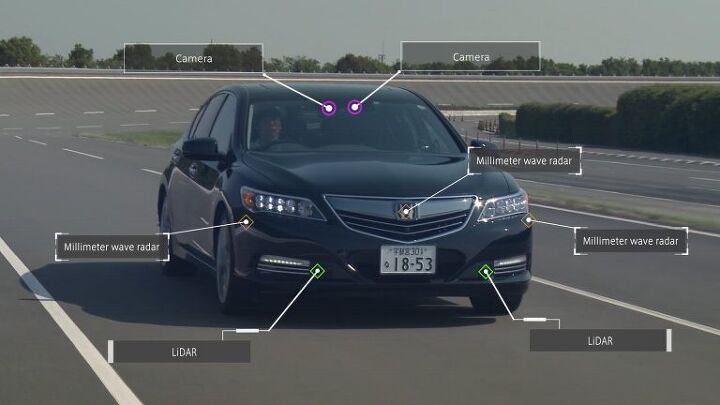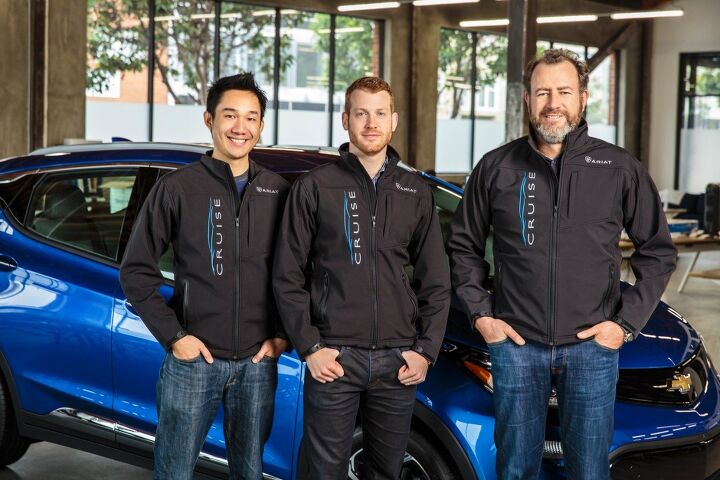#AutonomousTech
Waymo's First Commercial Self-driving Service Launches in Phoenix
We’ve arrived. It’s officially #TheFuture.
After years of talk within the auto industry, Waymo says it will become the first company to offer a commercial taxi service using autonomous vehicles when the program launches in Arizona today. Called Waymo One, the Google subsidiary plans to offer the first batch of rides to the 400 individuals who participated in the firm’s pilot program. Afterwards, the service will be expanded to more riders in a broader area.
As with the company’s early rider program, Waymo wants to keep the launch small to assess demand while continuing the company’s testing in an environment it feels comfortable with. Based on the growing assumption that autonomous vehicles can’t handle inclement weather, Arizona seems like the perfect place to keep working out the bugs.
Similarly, public complaints have indicated Waymo’s fleet of Chrysler Pacificas may not yet be perfected.
Waymo Spins Tragedy Into Triumph for Autonomous Vehicles
Last month, a motorcyclist was injured by one of Waymo’s self-driving Chrysler Pacificas. According to the accident report, a car in the left lane attempted to merge into the same middle lane as the Pacifica test platform, which was operating in autonomous mode. The safety driver then “took manual control of the Pacifica out of an abundance of caution, disengaged from self-driving mode, and began changing lanes into [the outside lane].”
Considering the AV wasn’t traveling above 25 mph, it’s a little curious the driver took evasive action, unless the second car attempted to merge directly into it. Regardless, the Pacifica’s lane change placed it into direct contact with a motorcycle that was moving slightly faster. Waymo said that, had the autonomous system been left in play, the vehicle would have assuredly avoided the accident.
Students Role-play Autonomous Driving Tragedy Before Automakers Have To
Graduate students from the University of Michigan are currently engaged in a twisted role-playing game, where they attempt to cope with the media backlash following various failures of self-driving cars. The exercise is intended to help them understand the pitfalls associated with autonomous tech and how to best respond when it goes terribly awry — something automakers will also have to go through as self-driving vehicles become more prevalent.
Broken into teams of four, 30 groups across the Ann Arbor campus were confronted with a pretend automated tragedy last night. The details were delivered to them in much the same way they would have been to a real manufacturer: through phone calls, emails, social media, and in-person meetings.
They have until tonight to mitigate the fallout from the incident, generating business solutions in a faux 24-hour news cycle.
Visteon CEO Bets Company's Future on Autonomous Vehicles
After spinning off from Ford in 2000, Visteon has set a corporate goal of expanding its supplier business to other companies. However, it hasn’t been smooth sailing. Granted Chapter 11 bankruptcy protection in 2009, Visteon emerged intact from its reorganization the following year. By 2013, the automotive supplier announced it would pare down its operations to focus primarily on vehicle electronics and HVAC systems.
Now, CEO Sachin Lawande says the company’s future hinges on autonomous vehicles. At this week’s Consumer Electronics Show in Las Vegas, Visteon will unveil its new DriveCore platform, a central control unit for electronics and software in autonomous cars known as a “domain controller.”
Time's Up: Tesla Missed the Deadline for Its Nationwide Autonomous Test Drive
While The Truth About Cars has occasionally been accused for having it in for Tesla, the honest-to-god-truth is that we just possess a severe aversion to unbridled hype. Autonomous cars have made a lot of progress in the last few years, but there’s something about the way manufacturers talk about them that makes us want to say, “Interesting, but we’ll believe it when we see it.”
Automakers love making grandiose claims and Tesla Motors’ Elon Musk may be the prince of hyperbolic statements and lofty promises. He should be commended for delivering on many of them. Still, though there have been many occasions where the other shoe dropped and it was our job to report it. We’re having to do that again, now that Tesla has missed its initial deadline to dazzle the world with an autonomous cross-country road trip.
The Difference Between Ford and General Motors' Longterm Strategies
While General Motors has become progressively more brazen in outlining its plans for the future, Ford has kept its cards a bit closer to the chest. We do know both companies have similar long-term goals, but Ford has been (rather wisely) preoccupied, adjusting its fleet to meet global demand and ensuring production flexibilities that should prevent it from being caught off guard by an industry turnaround.
It’s interesting because, a little over a year ago, former Ford CEO Mark Fields was promising a complete evolution of the automaker into something called “a mobility company.” However, it now looks as if GM is the firm making a beeline toward alternative revenue streams and a new business model, while Ford takes a more measured approach.
Tech-laden 2019 Audi A8 Might Just Trump the Mercedes-Benz S-Class Again
For years, the Mercedes-Benz S-Class represented all the cutting-edge automotive wizardly you could hope to see trickle down into plebeian cars. That honor now belongs to the Audi A8. While Mercedes recently revamped the S-Class to better compete with Audi, the A8 is back with a vengeance — proclaiming itself, once again, to be the future of automobiles.
Now that “luxury car” really means “technology buffet,” Audi has adorned the 2019 A8 with the very best it can offer, hoping to find its way back into the premium vehicle market’s good graces.
Apple CEO Dubs Self-driving Car Program 'the Mother of All A.I. Projects'
Apple has been perpetually flip-flopping in terms of developing autonomous vehicles. In 2014, the company was rumored to have begun work on an autonomous electric car, codenamed “Project Titan,” with hundreds of employees devoted solely to its development.
Management issues and logistical problems impaired its progress, leading Apple to abandon the project. Since then, Bob Mansfield has fronted a renewed effort to focus on building an autonomous driving system rather than a complete car. At least, that was everyone’s best guess, as the company has been semi-secretive about its mission since day one.
That changed on Tuesday, when CEO Tim Cook confirmed that Apple does indeed have a self-driving development program. The chief executive even went so far as to call it “the mother of all A.I. projects.” That’s quite the claim to make, considering making the tech work on a car is half the battle and Apple has no practical experience building an autonomous vehicle.
Honda Officially Joins the Rest of the World in EV and Autonomous Development
Honda Motor Company finally expressed an interest in developing autonomous cars on Thursday, while also stating its intention to bring two new electric vehicles to market by 2018.
The Japanese automaker has been cautious in making tech-related promises, especially those that relate to self-driving models, even as many of its rivals wear their autonomous development efforts like a badge of honor.
We knew Honda was working on the technology, but any semblance of a goal-oriented timeline was absent prior to this week. As part of its “Vision 2030” strategy, the car manufacturer claims it will coordinate R&D, procurement, and manufacturing to minimize development costs as it branches out into the realm of self-driving and electric vehicles.
GM's Self-driving Team Fires Back at Tesla With New Autonomous Bolt Video
General Motors’ self-driving startup, Cruise Automation, has trickled out dash cam videos of an autonomous Chevrolet Bolt milling around San Francisco since February. The video quality was poor and it wasn’t anything we hadn’t already seen from a self-driving car. Tesla went so far as to call tech startups like Cruise Automation and Otto “small teams of programmers with little more than demoware” and scolded Ford, GM, and Uber for investing billions of dollars into “unproven” projects.
However, Cruise’s most recent video seems to show that it has made some legitimate progress in the last three months. Set at night, the clip shows the self-driving Bolt navigating a dense urban environment while avoiding collisions with cyclists, pedestrians, and even a raccoon.
We have to take General Motors’ word for there being zero human intervention, since we never get a clear view of the steering wheel, but the company has assured us that is the case. We also noticed the Bolt never makes a single right turn on red, even when it seemed safe to do so, and reached out to GM to ask why.
Which Companies Are Winning the Autonomous Vehicle Race?
Ford’s head of research, Ken Washington, suggests that the general public won’t be able to buy a fully autonomous vehicle until sometime between 2026 and 2031. That’s a little later than CEO Mark Fields’ claim of “by 2025.”
We already know that companies are making timeline promises they can’t really keep but, with Ford currently working on an autonomous ride-sharing fleet to be used on public roadways in 2021, the amount of wiggle-room in Washington’s estimate is a little unsettling. If the technology is sufficient to shuttle people around in a taxi, shouldn’t it be equally adept in accomplishing that task regardless of what seat the human is occupying? Exactly who is leading in this race?
As Its Automotive and Robotic Programs Languish, Honda Tries to Rekindle the Spirit of Innovation
Honda wants to up its software game and encourage creative uses for ones and zeros at its new research and development center. With ASIMO — the company’s adorable robot mascot — almost old enough to smoke, Honda hasn’t developed a super-high-profile gizmo in nearly 17 years.
Recently, the company took a distinctive back-to-basics approach to address slipping quality, though CEO Takahiro Hachigo confessed that rekindling the R&D “spirit” would be the other half of building a better Honda Motor Co.
With those goals in mind, Tokyo’s Honda Innovation Lab opened its doors to the press on Tuesday as the company announced it will be forming a specific unit to focus on the development of software-laden technology for its next generation of vehicles.



























Recent Comments